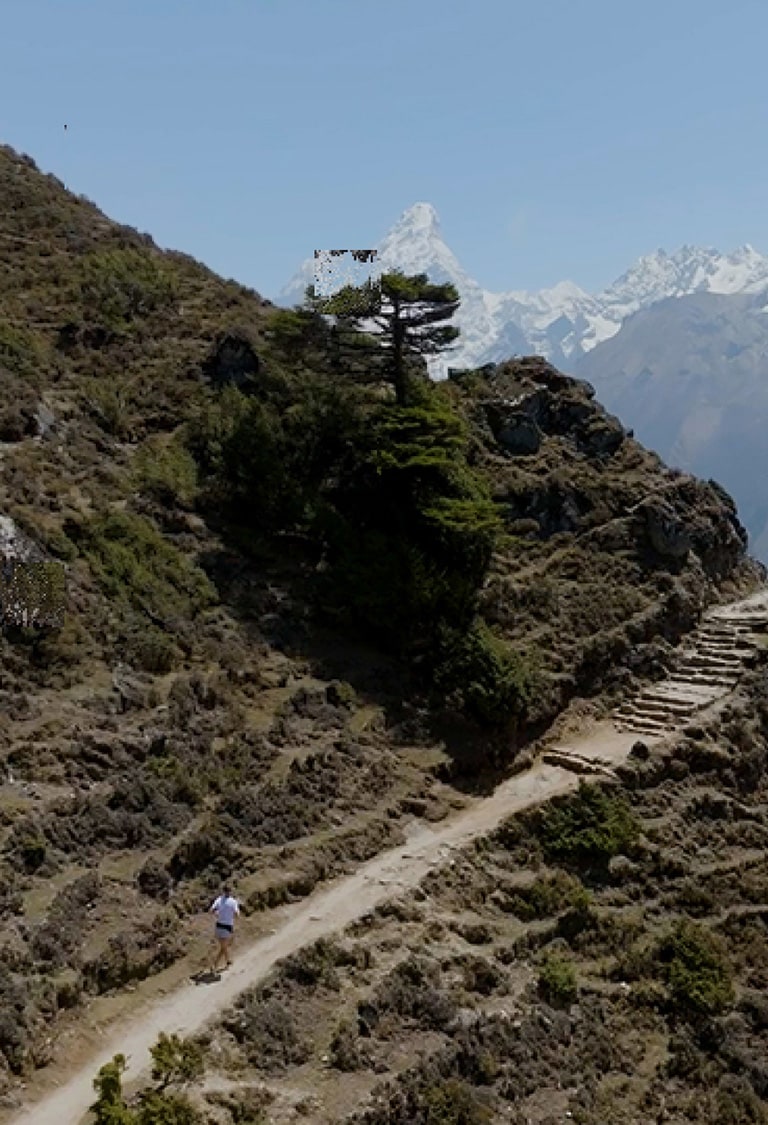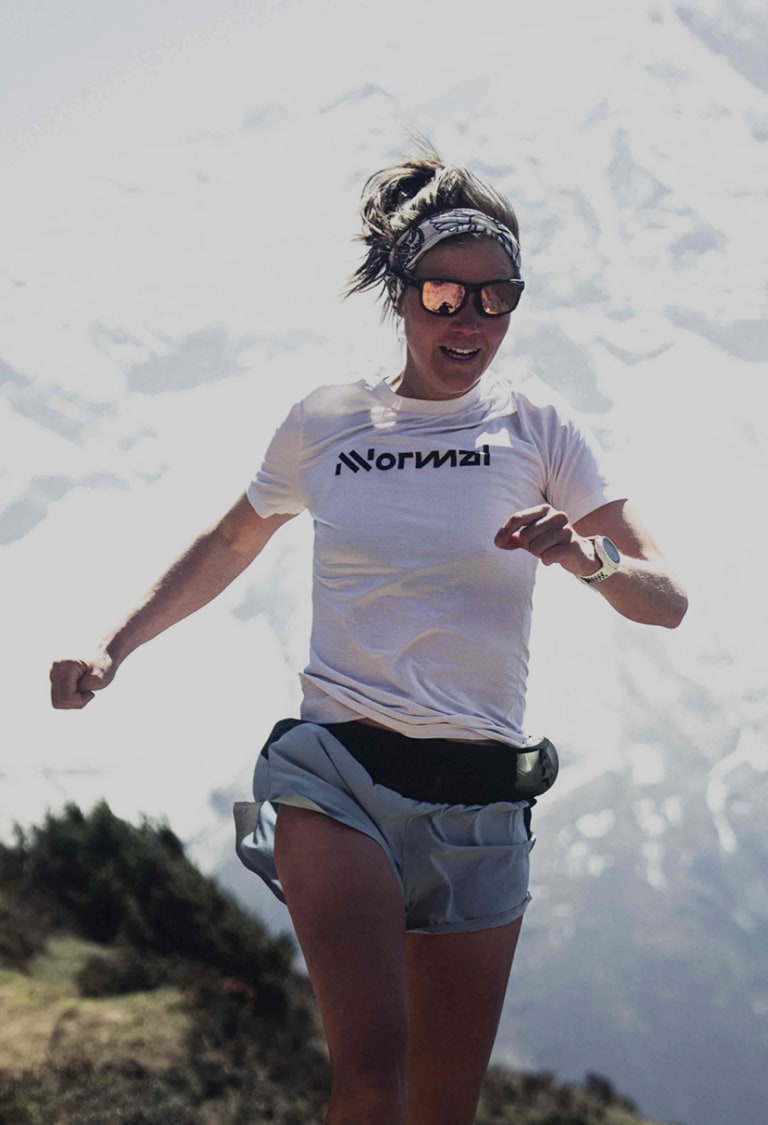Stories / May 2023
A NNormal adventure in the Himalayas
Family above all
Week 4
Training at over 4,300m with Emelie Forsberg
18. May 2023 / Pheriche, Nepal
Today it is three weeks since we arrived in Nepal and now we feel right at home living in the Himalayas. We have got used to sleeping in all kinds of shelters, lodges and tents, and we are gradually getting used to the cold temperatures we are encountering in Pheriche.
Another habit we have acquired living at an altitude of over 4,300m (14,000 feet) is to check our blood oxygen saturation. We do this every morning as soon as we open our eyes and get out of our sleeping bags. We use a pulse oximeter, a peg-shaped device that you clip onto one of your fingers, to make sure we are well and nip high-altitude oedema in the bud. We have all made this morning habit part of our routine, including Ylva-Li and Maj, Emelie and Kilian’s daughters.
The normal blood oxygen saturation level for a human being is 95% to 100%. When saturation falls below 90%, the body can become hypoxaemic. One of the most classic symptoms is shortness of breath. Fortunately, we have woken up every day with our saturation levels under control and have been able to continue our journey through the Khumbu region of Nepal. I guess our progressive changes in altitude have helped our bodies to acclimatise better.
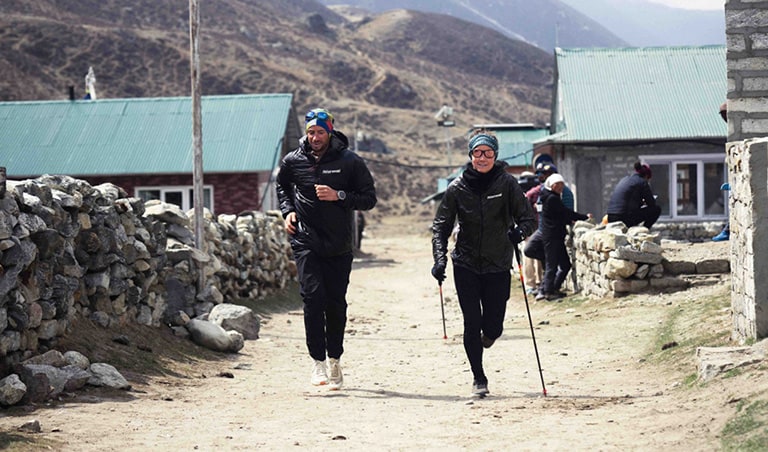
Staying in Pheriche at 4,371m (14,339 feet) above sea level
Staying in Pheriche for a few days has allowed us to leisurely discover our surroundings, perfectly acclimatise to the altitude, and explore countless trails from which we have seen some truly magnificent peaks. Emelie Forsberg says the area is even better than she had imagined before embarking on this journey.
“Being in one place for a few days is giving me a lot of peace. I’m training and spending time with my daughters. What more could I ask for?”
Emelie Forsberg
Travelling here with her daughters has helped her to see the area from a totally different perspective. Through their eyes everything becomes even more special and there is something surprising to see everywhere they go.
The temperature here in Pheriche ranges from -15ºC to 5ºC, so we are very grateful for every ray of sunshine. On sunny days, we take the opportunity to go for walks and short hikes near where we are staying. This allowed us to see the Tsola river crossing and enjoy incredible landscapes with Emelie and Kilian’s family.
The challenge of training above 4,000m (14,000 feet)
The trails around Pheriche are dry, rocky and inviting to run on. Plus, the snow-capped mountains we see all around us make everything so much more interesting.
Emelie’s training is not the main purpose of this trip, but she is aware that some major challenges await her on her return. First comes the World Mountain and Trail Running Championships in Innsbruck on June 6. So Emelie is making the most of the weather and terrain to keep up her physical preparation, while enjoying trails that are completely new to her.
“I don’t have a training plan. I just want to see how my body responds to the altitude and have fun exploring the area.”
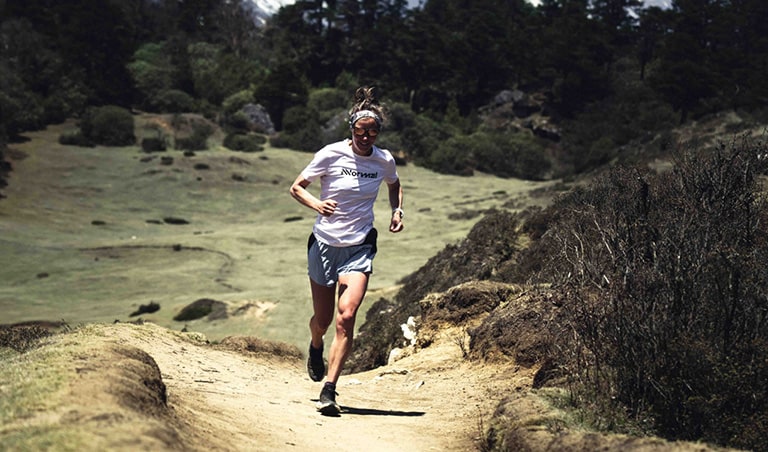
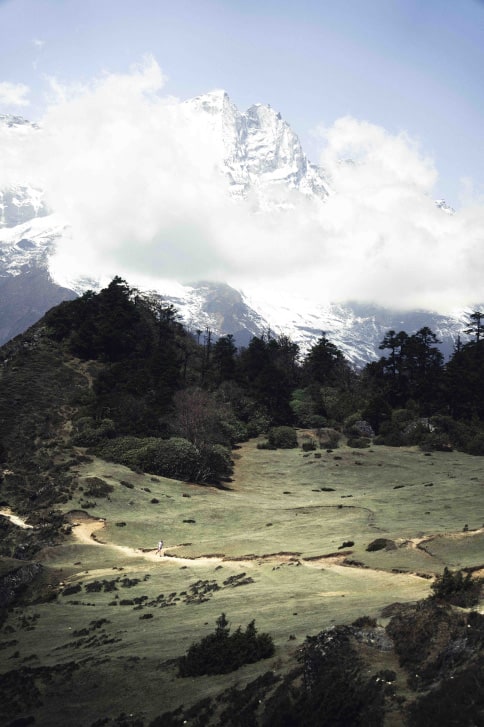
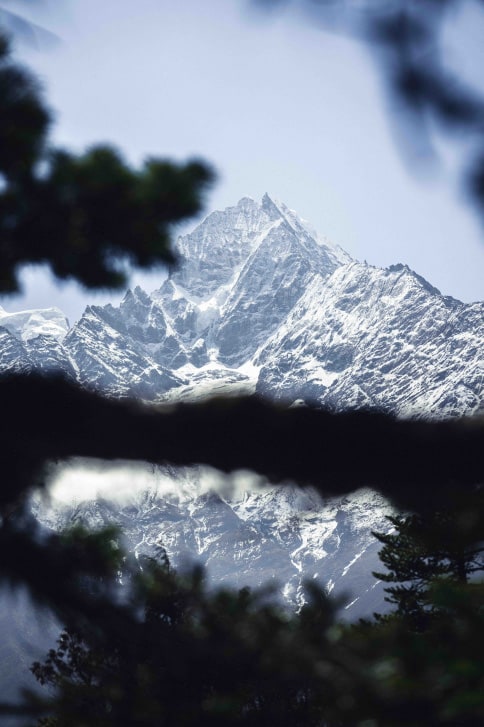
At dawn, after measuring her blood oxygen saturation, Emelie has breakfast with her family and checks the weather to decide whether she wants to go for a run. “I’m looking forward to seeing if I can get better times than the last time I trained at such high altitude on our last trip to the Himalayas. Back then, Maj was 6 months old, and I didn’t want to be too far away from her. Now she’s not so dependent on me and the whole family is here to be with the girls. So, this time it is all different,” she said.
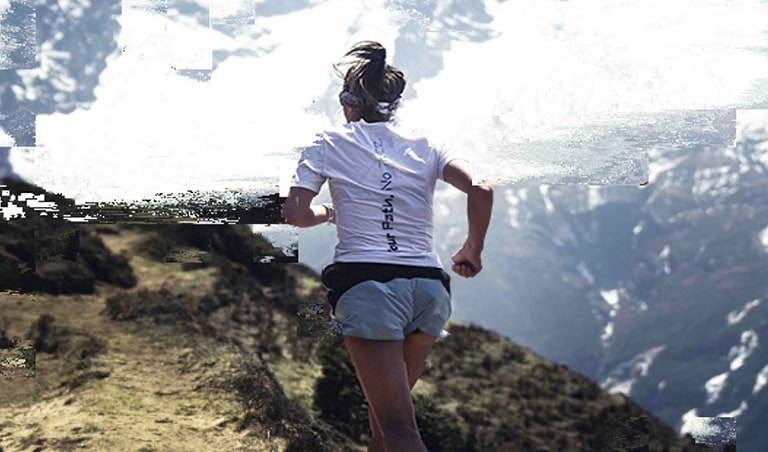
“Although the main purpose of this trip is to spend time with my family, I’m also taking the opportunity to train. Since we arrived, I have been adapting my training sessions to the altitude and how I feel every day when I wake up. One of the main consequences of running at over 4,300m is that you have to make more effort. So, I have to be aware of how I feel every day,” Emelie Forsberg added.
Our last few days in Pheriche are approaching and we want to enjoy them as much as possible. We will then go back to Namche to progressively descend. Until then we will spend time with the local people, as we tend to do, and will finish exploring the surrounding area to make the most of it and enjoy our time with Emelie and Kilian’s family. This experience has definitely exceeded our expectations and we will probably remember our time together forever.
Interesting details of our NNormal experience in the Himalayas
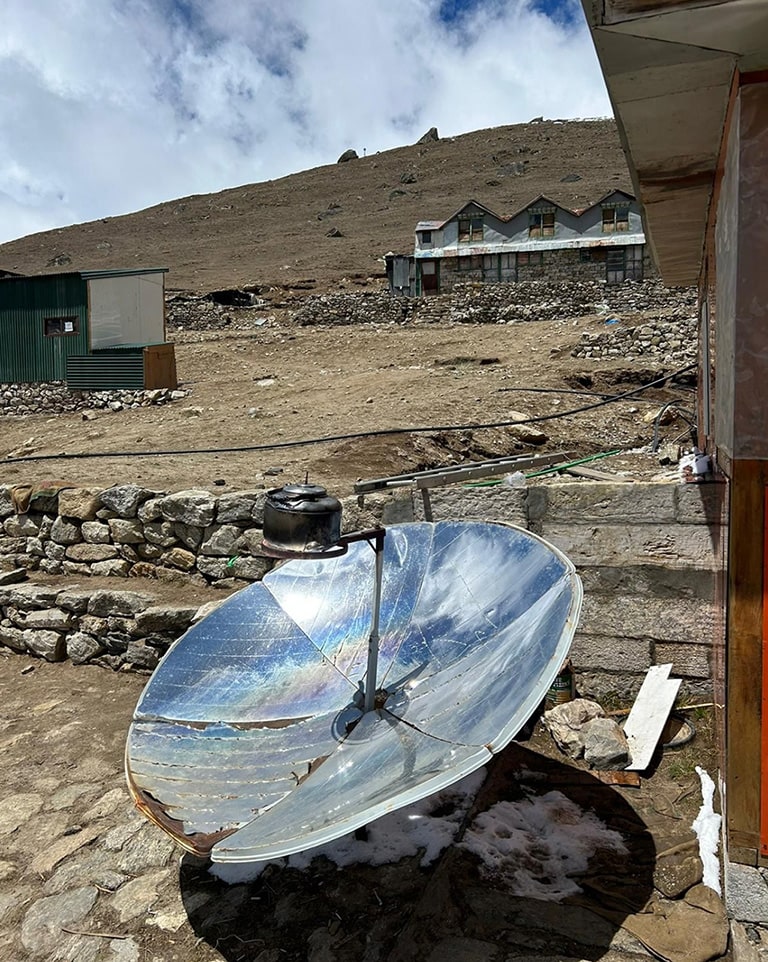
Solar power, garlic for altitude sickness and curious combustion systems
One of the most frequently asked questions by people thinking of travelling to the Himalayas is where you get the power to charge batteries or run small appliances. The answer is solar power, so it depends a bit on the weather. For the time being, everything is working normally and we can communicate.
Another interesting feature of our Himalayan adventure is that every day we eat a few cloves of garlic per person. Garlic is an antiplatelet food that helps thin the blood, which improves blood flow and oxygen supply to the brain. So, in spite of the bad breath, we feel much more confident when we have to exert ourselves.
Lastly, although we are used to it now, while walking around Pheriche, we came across vast numbers of yak droppings drying in the sun. The local people dry the dung from their yak herds to use it as fuel to heat their homes and even cook. Yaks are very common animals in eastern Nepal, so there is an inexhaustible supply of yak droppings.
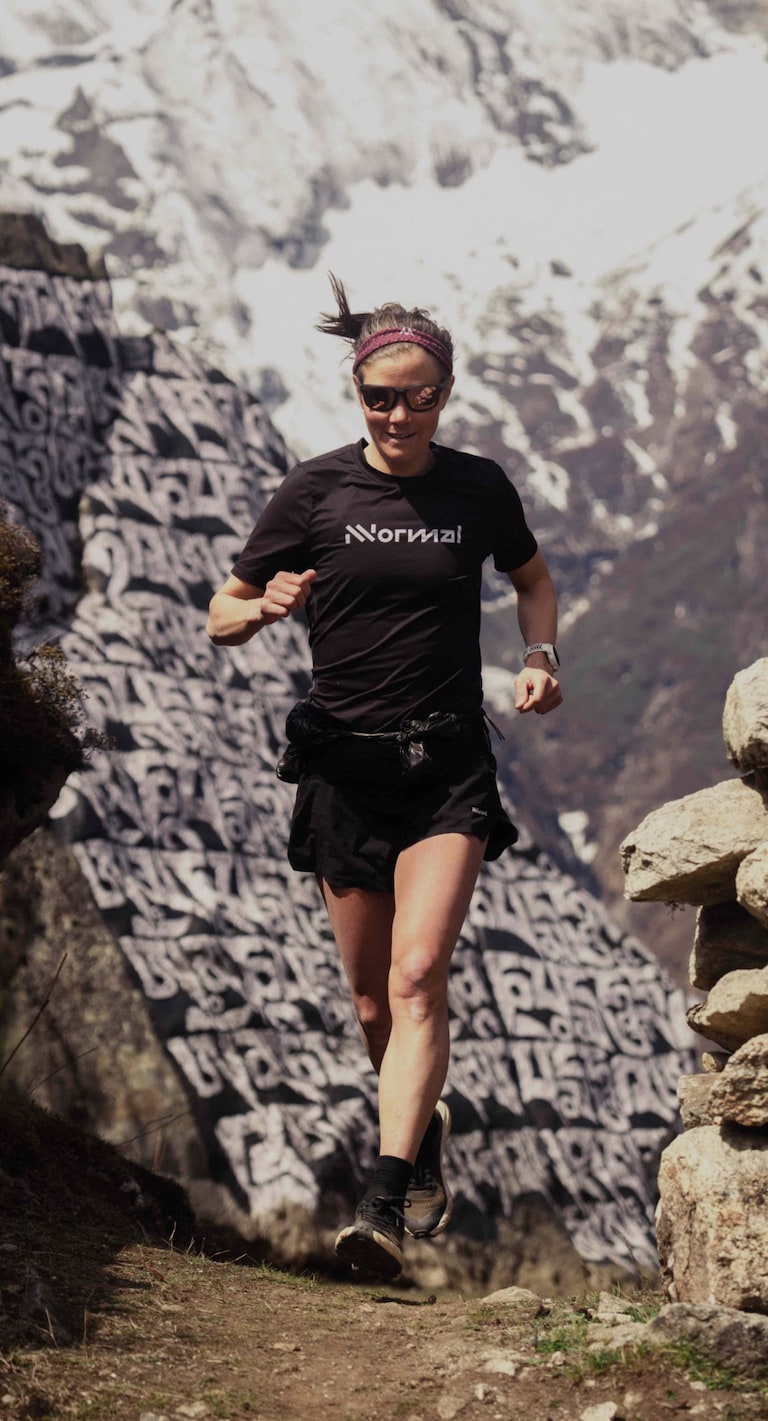
Emelie’s outfit for
the Himalaya adventure
See all outfit
Subscribe if you want to be the first to read the next chapter of this adventure!
Subscribe here
Read previous chapter
Photography: Julien Raison
Share with a friend
